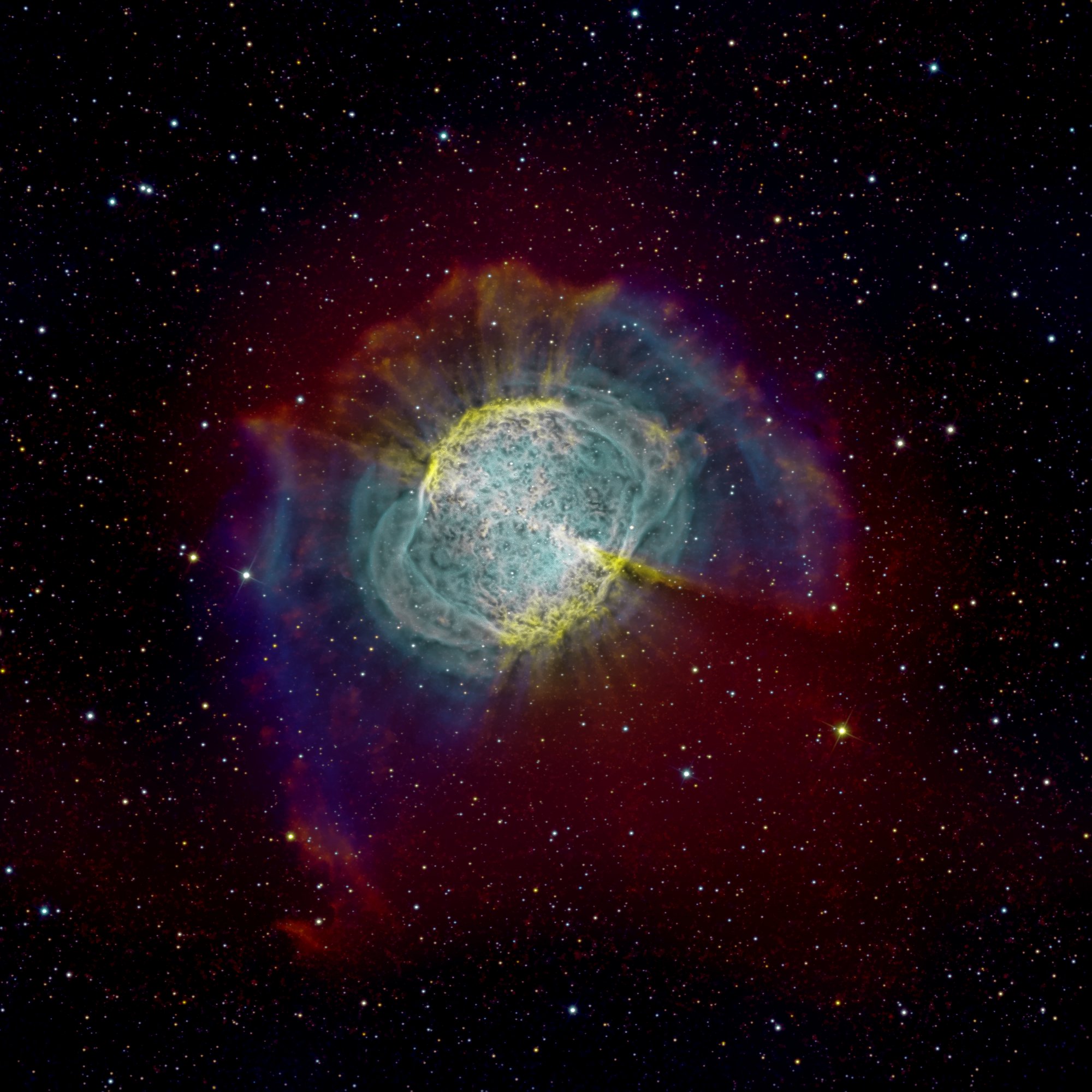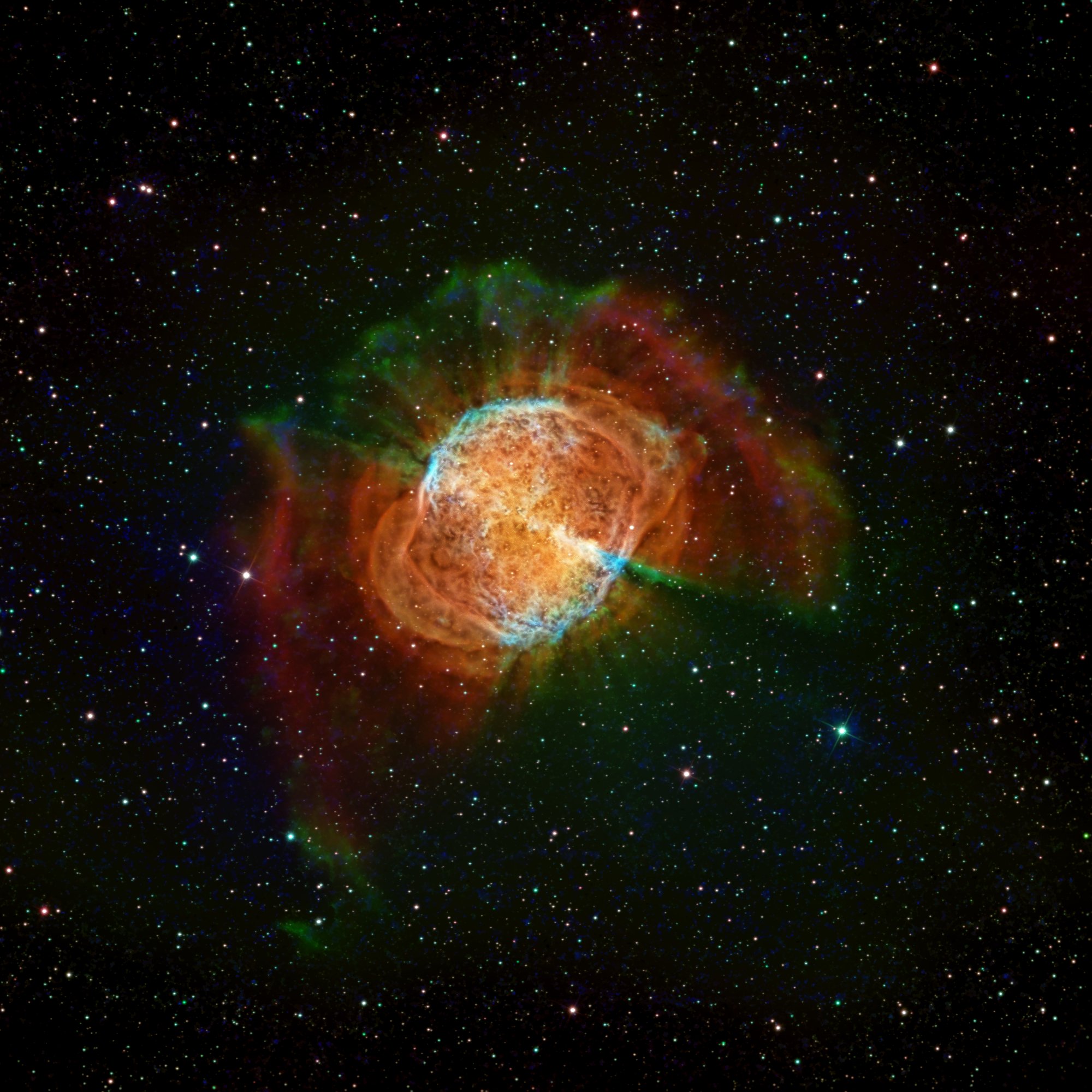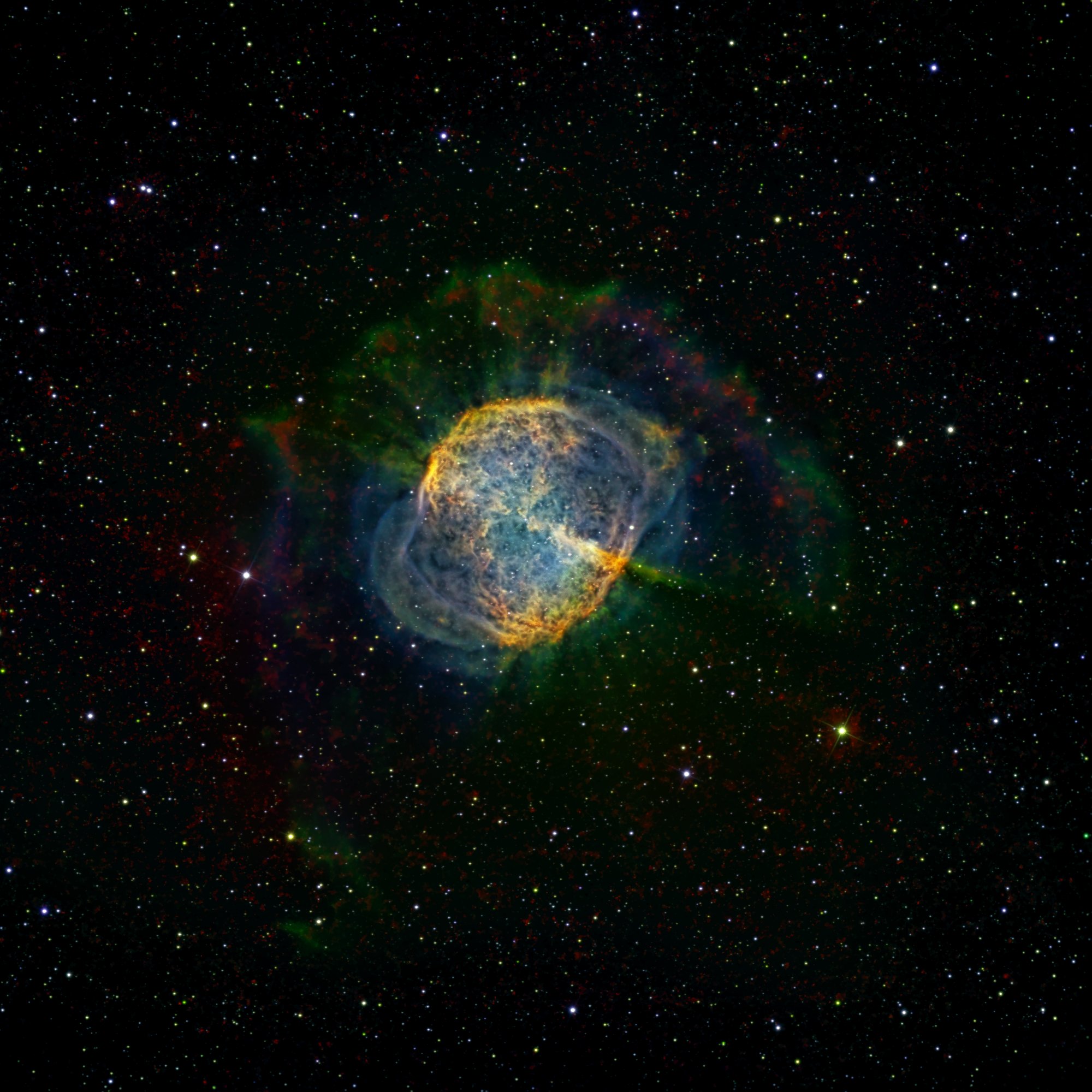M27
M27 (also known as Dumbbell Nebula) is a planetary nebula in constellation Vulpecula with an apparent diameter of about 16' (arcminutes). The nebulae lies at a distance of about 1300 ly from Earth (distance of the central star according to Gaia DR3).
Click on the image to load a wider version using a JavaScript viewer.



Image data
| FOV: | 0.31° × 0.31° | ||||||||||
|---|---|---|---|---|---|---|---|---|---|---|---|
| Date: | 2020-2021 | ||||||||||
| Location: | Pulsnitz, Germany | ||||||||||
| Instrument: | 400mm Newton at f=1520mm | ||||||||||
| Camera Sensor: | Panasonic MN34230 | ||||||||||
| Orientation: | North is up (approximately) | ||||||||||
| Scale: | 0.8 arcsec/pixel (at full resolution) | ||||||||||
| Total exposure times: |
|
Image processing
All image processing steps are deterministic, i.e. there was no manual retouching or any other kind of non-reproducible adjustment. The software which was used can be downloaded here.Image processing steps where:
- Bias correction, photon counting
- Dark current subtraction, flatfield correction, noise estimation
- Alignment and brightness calibration using stars from reference image
- Stacking with masking unlikely values and background correction
- Extracting stars from the emission line images using information from continuum images
- Denoising and deconvolution both components (stars and residual)
- RGB-composition
- Dynamic range compression using non-linear high-pass filter
- Tonal curve correction